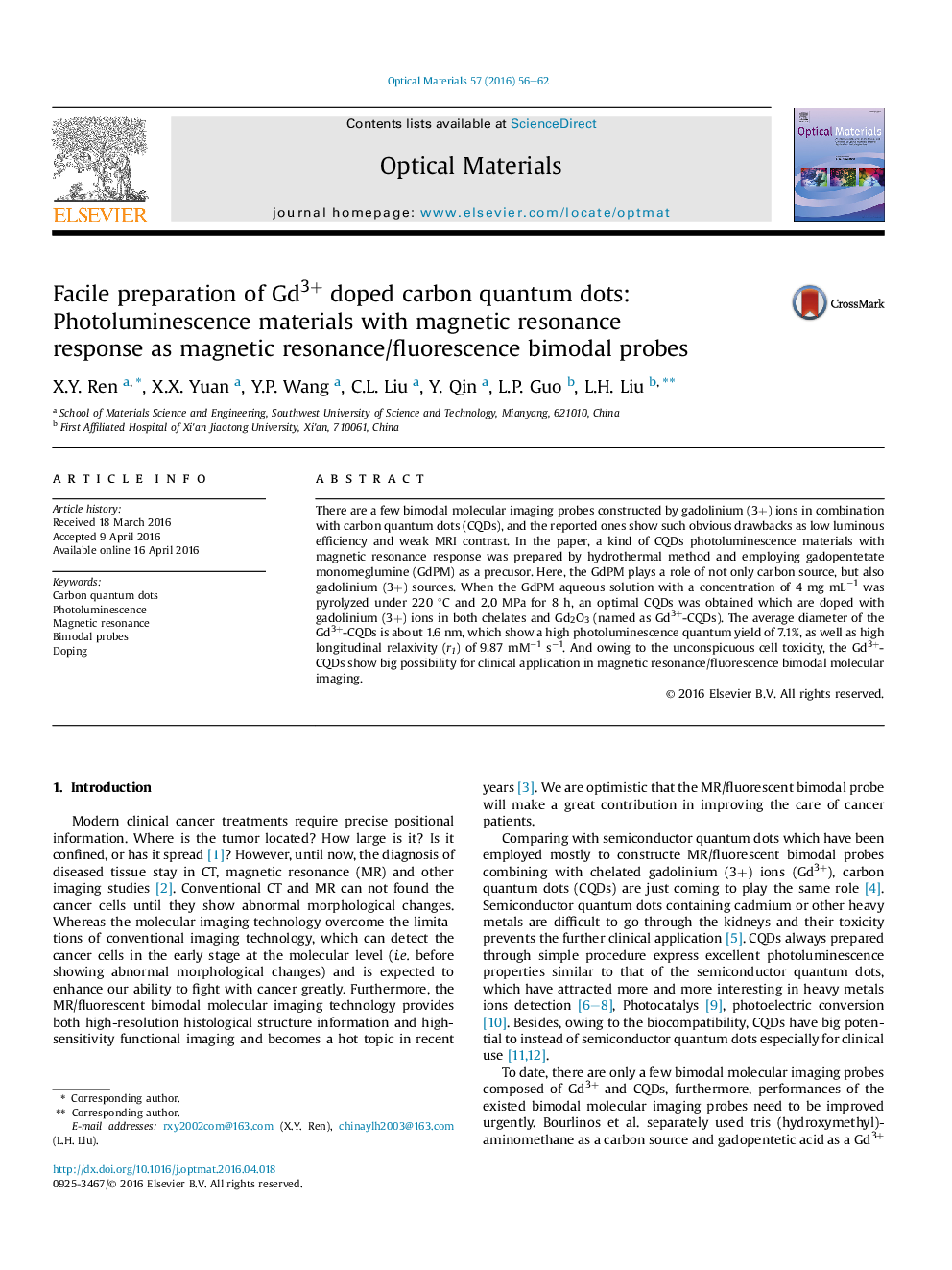| Article ID | Journal | Published Year | Pages | File Type |
|---|---|---|---|---|
| 1493286 | Optical Materials | 2016 | 7 Pages |
•An optical material with magnetic resonance response composed of Gd3+ dopped carbon quantum dots is synthesized facilely.•The optical material shows great potential as a magnetic resonance/fluorescence bimodal probe.•It is the nanoparticle-carrier effect of the carbon quantum dots give the prepared probe excellent MRI contrast strength.
There are a few bimodal molecular imaging probes constructed by gadolinium (3+) ions in combination with carbon quantum dots (CQDs), and the reported ones show such obvious drawbacks as low luminous efficiency and weak MRI contrast. In the paper, a kind of CQDs photoluminescence materials with magnetic resonance response was prepared by hydrothermal method and employing gadopentetate monomeglumine (GdPM) as a precusor. Here, the GdPM plays a role of not only carbon source, but also gadolinium (3+) sources. When the GdPM aqueous solution with a concentration of 4 mg mL−1 was pyrolyzed under 220 °C and 2.0 MPa for 8 h, an optimal CQDs was obtained which are doped with gadolinium (3+) ions in both chelates and Gd2O3 (named as Gd3+-CQDs). The average diameter of the Gd3+-CQDs is about 1.6 nm, which show a high photoluminescence quantum yield of 7.1%, as well as high longitudinal relaxivity (r1) of 9.87 mM−1 s−1. And owing to the unconspicuous cell toxicity, the Gd3+-CQDs show big possibility for clinical application in magnetic resonance/fluorescence bimodal molecular imaging.
Graphical abstractFigure optionsDownload full-size imageDownload high-quality image (281 K)Download as PowerPoint slide
